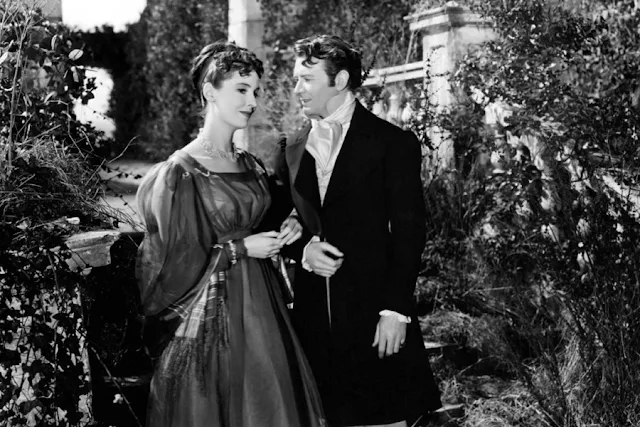 |
| Ivan Desny and Ann Todd in Madeleine |
Madeleine Smith: Ann Todd
William Minnoch: Norman Wooland
Emile L'Anglier: Ivan Desny
Mr. Smith: Leslie Banks
Mrs. Smith: Barbara Everest
Bessie Smith: Patricia Raine
Janet Smith: Susan Stranks
Christina Hackett: Elizabeth Sellars
Thuau: Eugene Deckers
Defending Counsel: André Morell
Prosecuting Counsel: Barry Jones
Dr. Thompson: Edward Chapman
Mrs. Jenkins: Jean Cadell
Director: David Lean
Screenplay: Stanley Haynes, Nicholas Phipps
Cinematography: Guy Green
Production design: John Bryan
Film editing: Clive Donner, Geoffrey Foot
Music: William Alwyn
I wanted
Madeleine to have the emotional depth of
Brief Encounter (1945) or the imaginative finesse of
Oliver Twist (1948), just to sustain my argument that David Lean was a greater director before he aimed for the epic scale of
The Bridge on the River Kwai (1957),
Lawrence of Arabia (1962), and
Doctor Zhivago (1965). But even Lean would later admit that
Madeleine is something of a dud. The story of an "unproven" murder -- the verdict the Glasgow jury returned at the trial of the real Madeleine Smith -- the film needs to generate a Hitchcockian tension that Lean never quite masters. One reason, I think, is that it stars the rather pallid Ann Todd, Lean's wife, who had played Madeleine Smith in a stage version of the story, when it needs a more accomplished and charismatic actress, a Deborah Kerr or a Jean Simmons, to bring out the ambiguities in the character. Todd rises to the role only in the final scene, when Madeleine rides away a free woman, a mysterious smile flickering across her face as the voiceover narrator questions whether she was guilty or not guilty. Otherwise, she generates little heat in her love scenes with Ivan Desny as L'Anglier* and the scene in which she throws him over for her father's choice as a fiancé, William Minnoch, comes as an abrupt about-face. Lean seems to be trying to do something with the character of the lover, including much business with his brandishing a phallic walking stick, but it doesn't come off. On the plus side, there are good performances by Leslie Banks as Madeleine's father, the quintessential tyrannical Victorian paterfamilias, and André Morell gives a rousing argument for the defense in the trial scene. Guy Green's chiaroscuro cinematography creates the proper mood, as do John Bryan's sometimes oppressive interiors.
*The spelling in the credits. The historical figure was called L'Angelier, which is also the way André Morell, playing the defense counsel, pronounces it.

























